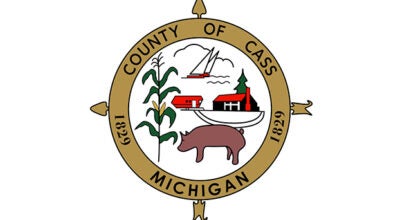County reviews mold bids July 18
Published 11:52 am Monday, June 24, 2013
Quotes for removing mold from the 1899 courthouse will be before the Cass County Board of Commissioners at its July 18 meeting.
Commissioners devoted 25 minutes to discussing the mothballed “vintage courthouse” at their three-hour work session Saturday morning.
County Administrator Louis Csokasy reiterated, “That is a very small part of the puzzle. If you mitigate the courthouse, you have to make the assumption you’re going to keep it and move air through it. We don’t know what the state of the equipment is because it’s been sitting idle for nine years.”
Utilities had cost $60,000 annually.
Csokasy reminded the board, “It gets back to the fundamental issue, what are we going to use the building for? I presented a plan to develop a use with timelines” on May 2.
April 17 the county received a report that the first floor of the courthouse has initial signs of adverse fungal growth. The annex and second and third floors tested clear.
An environmental firm was contracted for $4,780 from the capital improvement fund to retest those areas and to devise a remediation plan.
“It feels like stonewalling,” said Cathy LaPointe. “We’ve been talking about this for months. Let’s move forward.”
“You need protective gear to enter the building,” said Commissioner Robert Wagel, R-Wayne Township.
“Mitigation will be in bubble suits,” Csokasy agreed. “We’ve been moving along. The county found the mold issue and went to an expert to verify it. We’re in the process of writing an RFP (request for proposals).”
Mike Moroz of Dowagiac said, “That $60,000 is pennies. It could be reduced through green technology. If this building had stayed open, we wouldn’t have to spend money remediating mold. Shame on that board for closing that building. It’s too bad you guys inherited it.”
“I don’t want to talk about the last nine years,” Csokasy said. “The good news is you’ve talked more in the past six months about the vintage courthouse, which moves the issue forward — but you’ve got to come to a consensus and tell us what the use is going to be.”
“I know we have to decide use,” Commissioner Annie File said, “but we also have to decide how to finance it. The only way I can see to get it done is to pass a millage.”
“Actually, I agree with you,” Csokasy said. “It could cost 1 million to tear it down, $3 million to renovate it for county use and maybe $7 million for a full-blown restoration, but you can’t talk about anything until you decide what to use it for.”
“My concern is we’re doing things out of order,” Vice Chair Bernie Williamson said. “It’s free for people to get together and pull information and ideas together. We have people in the community who are clearly passionate about this. Once it’s defined, then we start looking for the money. Creating a vision costs us nothing but time. The only decision we as a board have to make is the commitment to preserve it or to take it down.”
“It seems to me there’s a consensus to keep the building,” Dowagiac Commissioner Clark Cobb said.
Jackie Taylor, an employee in the administrator’s office, said, “It’s gone on and on for months. Make a decision to preserve it or tear it down and go from there a step at a time.”
“I’ve talked to many people — rich, poor, black, white — and there is not one person who wants to tear that courthouse down, though there are some who will lay down in front of the bulldozers,” LaPointe said. “There is not a consensus to tear it down. You need to let people speak. Have a series of public hearings and let them talk about finding a use. They say they’re willing to pay a millage. Do not let this courthouse go.”
In 1977, commissioners bought 23 acres along M-62 at the northwest end of the village and, with a federal grant, built Cass District Library, eventually followed by the jail. In 1995, the county acquired 49 adjoining acres, with 13 deeded to the Cass County Building Authority for the Law and Courts Building, which opened in 2003, shuttering the old courthouse.
Csokasy advocates a committee led by Building Authority Chairman Bill Saunders, Silver Creek Township supervisor.
The recommended work group would consist of Csokasy, Saunders, a Building Authority alternate, County Treasurer Linda Irwin for financial expertise, a Village of Cassopolis representative, a maintenance manager for facilities expertise, an architect, historical preservation community and Economic Development Corp. representatives and a citizen experienced in interior layout and design.
That could take until 2014, with renovation, construction or demolition foreseen in 2016.
Csokasy estimated it costing $13,100 in the coming year to evaluate the condition of HVAC and electrical systems, plus another $10,000 in architectural fees for exterior views of the annex and courthouse and courthouse floor layouts.
Code analysis could be accomplished without additional cost with a study done in 2007.






